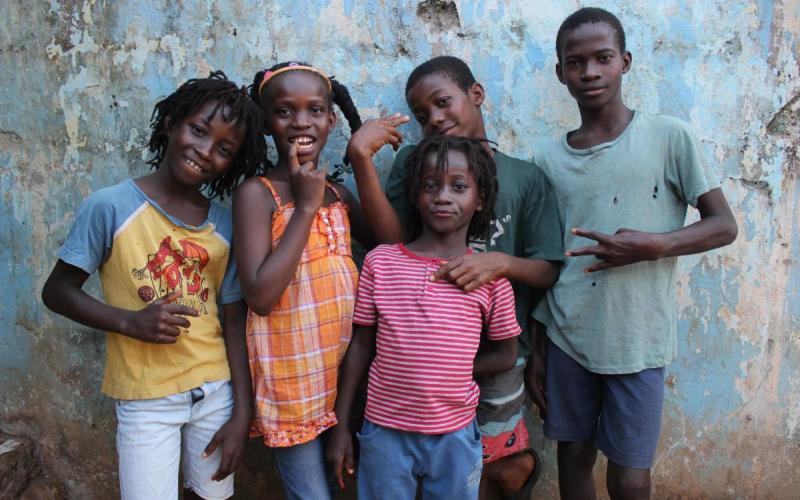
Throughout Kenya and other developing countries, there is a clear demand for water as an integral part of daily living. As a natural resource, water is in scarce supply and the ongoing drought in Kenya has greatly harmed already vulnerable populations. Adequate supplies of quality water can improve health and prevent disease through better sanitation and hygiene, and contribute to productive livelihoods. The pastoral communities are suffering great financial losses as their herds die from lack of water and suitable land for grazing disappears. Women and children are especially vulnerable to the effects of the drought, since they are left behind while men search for water, food or grazing land. The challenges they face include the loss of income, prolonged separation of their families, increased prevalence of diseases related to the drought, and loss of educational opportunities. To alleviate this situation, community members, stakeholders, and political leaders must collaborate to ensure a more stable future for those struggling from the failed rainy seasons. Immediate action will prevent further drought related damages and will contribute to improved social well-being and economic productivity.
Health related concerns are most alarming and widespread as drought affected populations are more susceptible to illness and death. The lack of safe and affordable water has contributed to poor hygiene and sanitation practices, resulting in higher rates of diarrhea, infections caused by fecal oral transmission, and diseases carried by vectors associated with solid waste and water.
Rural areas are especially at risk, as 46% of their population has access to safe water and adequate sanitation, compared with 83% of urban populations. This further reinforces the need for improved water management and sanitation. The loss of animals, crop failure, and rising commodity prices resulted in a dangerous food shortage. There are an estimated four million people in need of ongoing food aid in Kenya, of which two million are children. This has led to higher rates of malnutrition, a condition that also increases the risk of measles and other vaccine preventable diseases. The prevalence of acute malnutrition in children is 20-30% in most areas of Kenya, and is thought to be higher, as it is difficult to document and often not recognized or treated until critical stages. Pregnant and breastfeeding women and children under five are especially at risk, as they do not receive the additional nutrition they need.
While men tend to the needs of their herds, women bear disproportionate responsibilities in caring for the family and household duties. Their responsibilities include caring for children and the elderly, cleaning the home, cooking, and collecting water. Women sometimes walk up to 30 kilometers to water sources, and often what they are able to collect does not meet the needs of their families. As they travel farther away to available water sources, they have less time to devote to their family’s needs, resulting in social and health related consequences.
As parents engage in more activities away from the home, children suffer the consequences as they are left to care for themselves and the household duties. They care for the young, search for water, and prepare meals for their families and step into more adult roles out of necessity. To supplement the family income, they often take jobs outside of the home, and put themselves at risk for abuse and exploitation as they are without parental protection. When children are expected to bear household responsibilities or provide income for their family, their education suffers significantly. Often, the drought forces children to leave school so they can tend to familial duties and contribute to the household income.
In order to alleviate the time commitment and physical requirements of collecting and transporting water, a low cost sustainable intervention is needed for the community in order to provide the recommended 5L per person per day. Many water programs are focused on short-term solutions such as trucking water to drought-affected communities or providing new point sources of water. Communities often overlook the already existing supply of rainwater, whose storage may help meet water needs during the dry seasons. Domestic rainwater harvesting (DRWH) is an attractive option because it allows for water delivery to the homes of individual users, removing the burden of walking long distances for water. The annual rainfall in Kenya ranges from 150 mm to 2000 mm and represents the most common accessible source of water. Collecting rainwater is a simple yet effective method of providing water for domestic household use in cooking, cleaning, drinking, and other daily activities.
The ongoing drought in Kenya will continue to pose a severe threat to millions of people. While the demand for water continues to rise, the use of domestic rainwater harvesting will allow families to meet their household needs for drinking, cleaning, and cooking without additional pressure on their time and financial resources. The collection and use of rainwater is especially helpful to women and children in the community, who typically bear the greatest burden of water collection and transport. The storage of rainwater at the home allows women and children to participate in other gainful activities such as completing their educations or fostering small business enterprises. The use of domestic rainwater harvesting allows for minimal effort and investment, but yields numerous benefits for each household. With the collaboration of community leaders, community members, and international organizations, rainwater harvesting can become a reality. This intervention has the potential to save lives, improve health, and build stronger communities.
References
World Water Assessment Programme. Kenya National Water Development Report (2006). www.unesco.org/water/wwap
Save the Children Canada. “Kenya Drought 2009.” Retrieved from http://www.savethechildren.ca
“Water for the World.” USAID Technical Notes. n.d. Retrieved from http://www.watersanitationhygiene.org 18 December 2009

